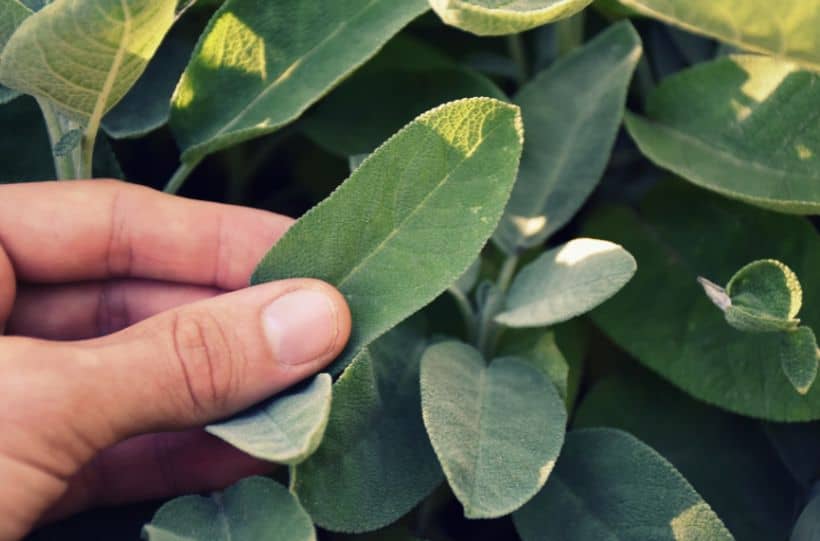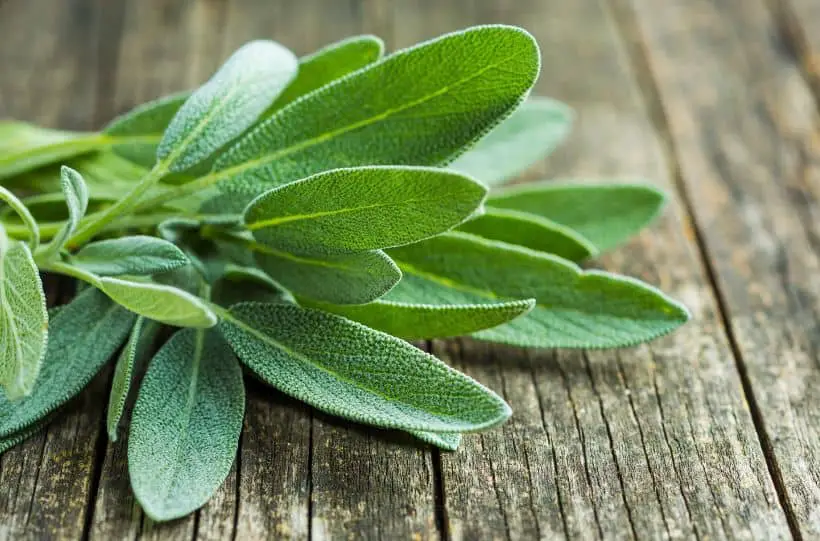How To Harvest Sage
Harvesting sage is easy and simple, so long as you know how. Being a perennial plant, if you harvest sage correctly, your plant will provide you with fresh sage for years to come.
As with most plants, there are optimum times for harvesting sage and a couple of methods you can choose depending upon the amount you require.
Keep on reading to find out how to harvest sage properly and without killing it.

When Is The Best Time To Harvest Sage?
Though sage is quite versatile and can be harvested at any time of the year, it is best to wait until particular times to achieve the maximum flavor.
Sage can take approximately 75 days to mature from seeds. However, it is recommended to allow sage a year to grow before harvesting. This is so that your plant has time to establish roots and a solid foundation to ensure it can regrow stably when being harvested at a later date.
After the first year of growth, sage can be picked in the spring and summer months. The leaves are most fragrant during the growing season and before buds form. Sage can be harvested after buds have formed, and even the buds can be harvested too, however they won’t be quite as delicious as if they were harvested beforehand.
Though it can be picked during winter, your sage plant will be in a state of dormancy. So any leaves picked will not regrow until the following spring. Any harvesting during winter should be done lightly so that your sage plant has time to recover in the Spring and replenish its leaves.
The best time of the day to harvest sage is in the morning after the dew has dried but whilst the leaves are still hydrated. The leaves will be fuller in flavor and better quality than later in the day when the sun is high and the leaves become dry and wilted.
How To Harvest Sage?
There are two core ways to harvest sage depending on the amount you require. However, you should aim for each leaf to be between 1-5 inches long as these are mature leaves and provide your other leaves with more time to grow.
Look for leaves that are the healthiest. Those are leaves that are deep green. Remove any leaves that are yellow, brown, or have spots on them as these are not good to eat and need removing from your plant.
If you are wanting a small amount of fresh sage to use immediately, you can simply pinch off the leaves you require from the base of each leaf where it attaches to the stem. Make sure to harvest the leaves gently to not uproot the whole sage plant.
Alternatively, if you are looking to dry sage, you will want to harvest a larger quantity. As the stems are thicker lower down, they are too large to pinch cleanly with your fingers. Instead, use a pair of clean shears to make a smooth cut.
Cut a stem at the base of your sage plant that is full of healthy leaves. Ensure to choose stems that are at least 6-8 inches long. You can harvest several stems at the same time, but remember to leave at least two-thirds at any one time so that the plant can recover.
At the end of the summer, it is best to have one final harvest of your sage plant. This is to encourage new growth for the following spring, which will ensure your sage plant becomes fuller and healthier.
It is best to stop harvesting once fall sets in so that your plant can prepare itself for the winter months.
Frequently Asked Questions
Where do you cut sage when harvesting?
You can pick individual sage leaves using your fingers by pinching where the leaves join the stem. Or for a larger quantity, cut a full stem using clean shears. The stem can be cut towards the base of the plant.
How do you harvest and preserve sage?
You can harvest sage by picking individual leaves or entire stems. Individual leaves can be used fresh whereas larger quantities can be dried for later use. Fresh sage needs to be washed, patted dry with a paper towel, and then hung to dry. Once dried, they can be stored whole or crumbled into a jar that is airtight and stored in a cool, dark place.
How do you cut sage so it keeps growing?
If cutting large amounts of sage at a time, it is best to leave at least two-thirds of the plant. This will help encourage your sage plant to produce more leaves, providing you with a fuller, healthier plant.
How do I know when my sage is ready to harvest?
Sage can be harvested once mature, which takes around 75 days. However, it is recommended for the best flavor and better, long-term results, not to harvest your sage plant until after the first year. Sage is best harvested during Spring and Summer, as it becomes dormant in the winter and won’t replenish any leaves harvested.
What is the best way to dry fresh sage?
Fresh sage can be dried in three ways:
- Tied and hung upside down in a cool, dark area. Once dry, the stems can be removed and they can be stored in an air-tight container.
- Flat air-drying. The leaves need to be stripped from the stems first and then spread evenly on a wire tray to enable good circulation. Add a cover over the top to prevent dust from settling. Once dried, they need to be stored in an airtight container.
- Oven drying. Remove the stems and place your sage leaves on a tray in the oven at the lowest setting. Leave the door slightly open so that moisture can escape. Keep checking your sage until it feels dry without it burning. Once dried, it can then be stored. Keep in mind that using the oven-drying method can remove some of the flavors from your sage leaves.
Does sage regrow after cutting?
As long as two-thirds of your sage plant is left at any time, your sage plant will continue to grow each year as it is a perennial plant.

Make sure to check out these additional posts for more ideas and top tips on growing herbs:

